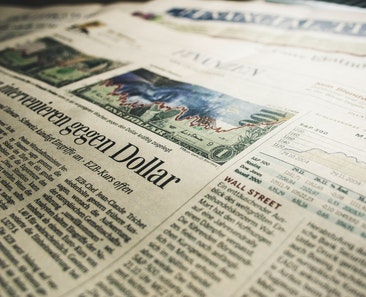Manufacturing Activity Surges to 2025 High: Philadelphia Fed

By Tom Ozimek
Manufacturing activity in the U.S. Mid-Atlantic region jumped sharply in September, beating expectations and reaching its strongest level this year, the Federal Reserve Bank of Philadelphia reported on Sept. 18.
The bank’s monthly Manufacturing Business Outlook Survey showed its current general activity index rising by a whopping 24 points to 23.2 in September, well above the 1.7 Bloomberg consensus forecast and exiting the sub-zero territory that it slumped into last month.
Indicators for new orders strengthened, climbing by 14 points to 12.4, with nearly 40 percent of firms reporting increases in general activity, a 10-point jump. Shipments surged by 22 points to 26.1, suggesting that order backlogs are clearing and demand is broadening.
Employment was little changed, with firms continuing to report modest increases in hiring, while the average workweek lengthened.
Inflation eased, with the Prices Paid Index falling 20 points to 46.8, down significantly from the multi-year high notched in the prior month. The index for prices received fell 17 points to 18.8, indicating a further downtick of inflationary pressures.
Forward-looking measures showed optimism, with the future general activity index rising to 31.5, its highest since May. More than half of firms expect higher activity over the next six months, though fewer plan capital expenditures.
The survey, conducted Sept. 8–15 among manufacturers in eastern Pennsylvania, southern New Jersey, and Delaware, is considered an early indicator of national factory trends.
The data bolster the view that U.S. factories are regaining momentum after a sluggish first half of the year, with regional surveys and private-sector gauges pointing to an industrial rebound even as the broader economy shows some signs of cooling.
In August, U.S. manufacturing activity grew at its fastest pace in more than three years, according to S&P Global, whose purchasing managers’ index jumped to 53, the highest since May 2022.
“US manufacturing was running hot over the summer,” Chris Williamson, chief business economist at S&P Global Market Intelligence, said in a statement.
“The past three months have seen the strongest expansion of production since the first half of 2022, with the upturn gathering pace in August amid rising sales.”
Recent trade data also point to momentum in manufacturing. Capital goods imports in July soared to record levels, signaling resilient domestic demand and stronger business investment. That came alongside a 1.1 percent jump in non-defense capital goods orders excluding aircraft—a key proxy for business spending—according to a Census Bureau report.
“The higher import number reflects increased business demand for capital investment. CapEx expenditures are projected to increase significantly this year as far as investments in both infrastructure and technology,” Dan Varroney, president and CEO of Potomac Core, a consulting firm specializing in trade matters, told The Epoch Times.
Besides signs pointing to a manufacturing revival, a key priority of the Trump administration, services strengthened in August, driven by an increase in new orders.
Still, there have been some indications of cooling in the labor market. The latest payroll data show that U.S. employers created 22,000 new jobs in August, falling short of economists’ expectations, while the unemployment rate edged up to 4.3 percent.
Federal Reserve Chair Jerome Powell addressed the jobs situation during a Sept. 17 press conference after policymakers voted to cut interest rates by a quarter point. He described the state of the U.S. labor market as a “low firing, low hiring” climate, adding that there’s clear “downside risk” to employment.
JPMorgan Chase CEO Jamie Dimon said recently that he sees the economy “weakening,” citing recent downward revisions to job creation data. But Dimon said that overall, the picture remains mixed, as most consumers remain employed and continue to spend, despite some loss of confidence.
Adding to the view that the labor market is softening is a recent survey from the New York Fed, which showed that worker confidence in finding a new job in the event of losing their current one dropped to a 12-year low.



